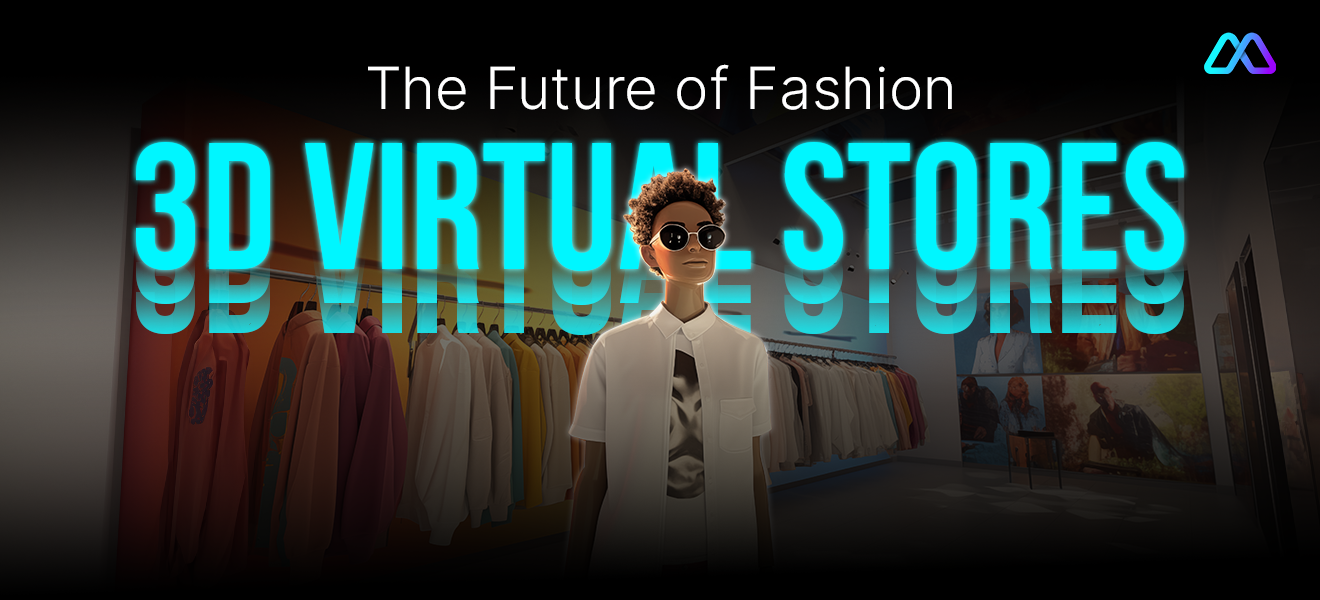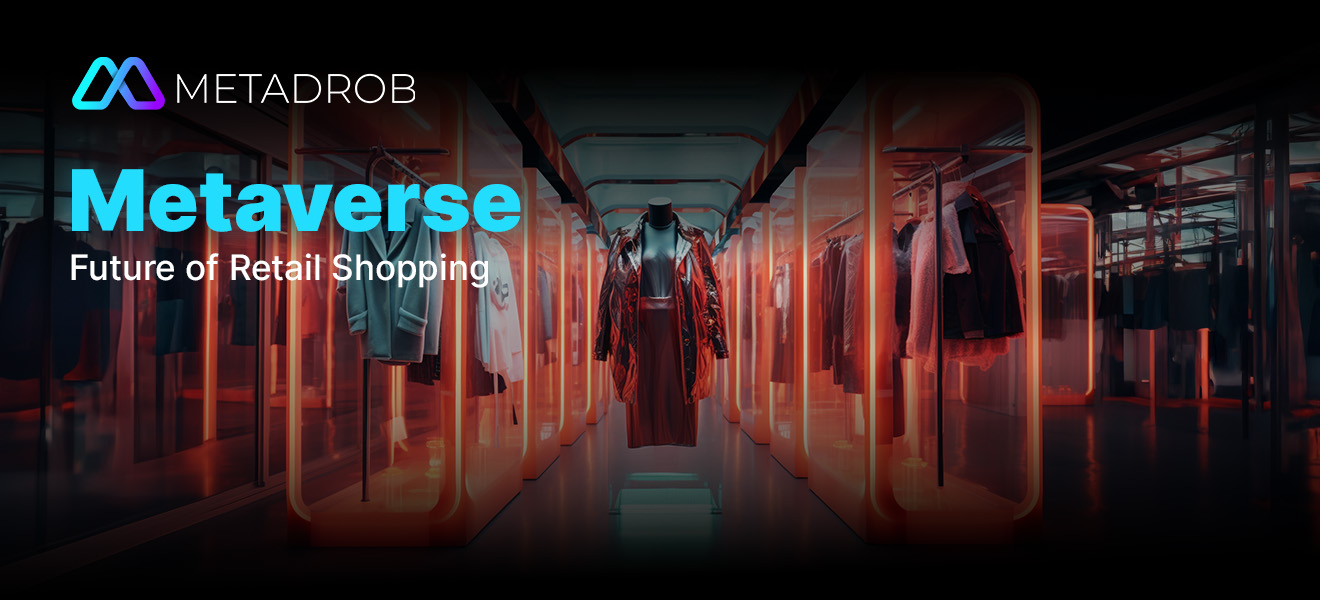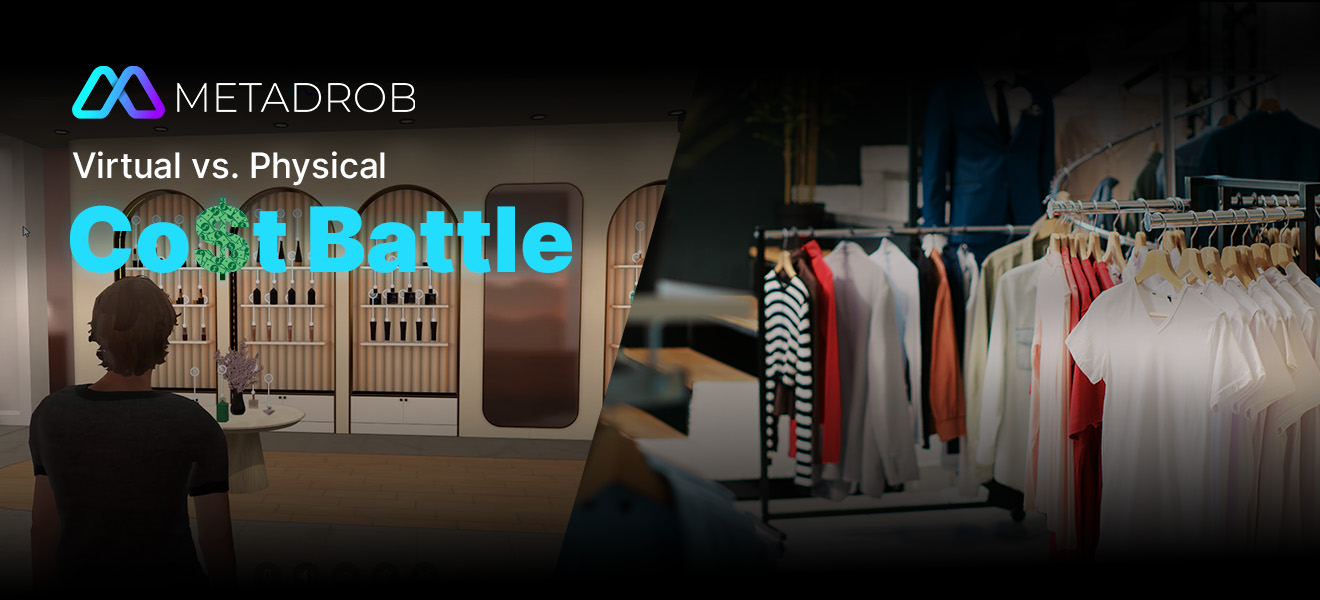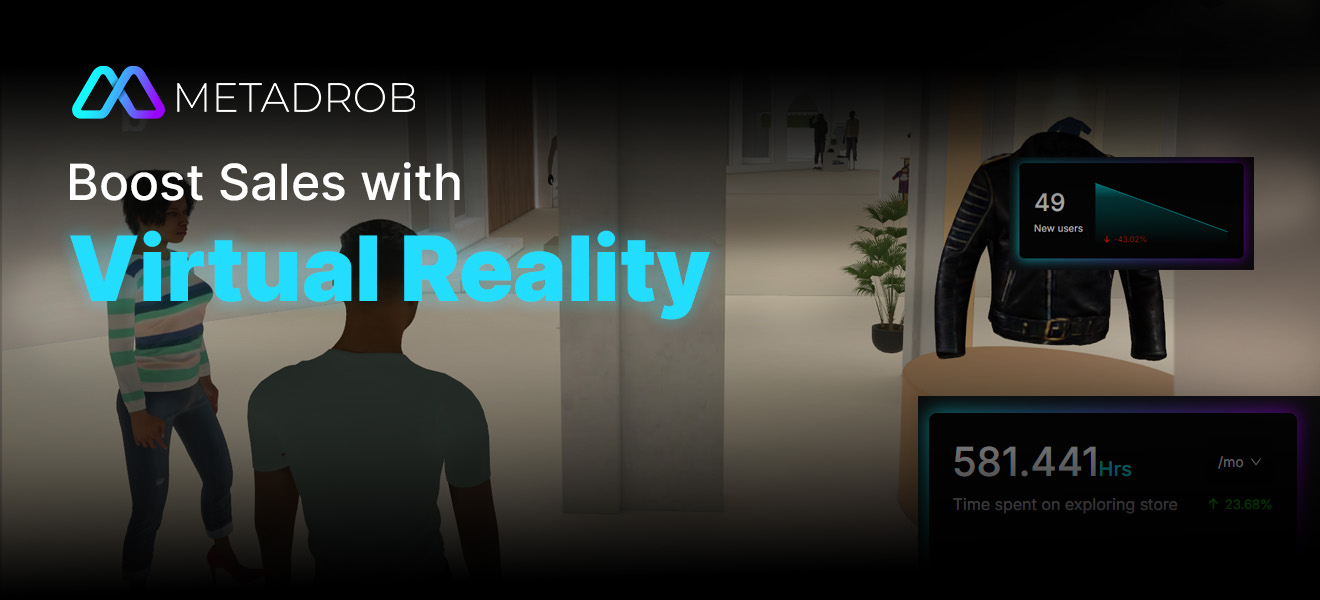How 3D Visualization Boosts Sales and Customer Engagement in E-Commerce

The apparel retail sector is now rapidly redesigning the shopping experience using IT solutions. With 3D virtual stores, apparel retailers can now introduce new concepts of Personal Shopping Experience & Interactive Retailing, Augmented Reality, and Virtual Try-On to their customers.
The fact that a shocking 70% of online shoppers continue to make subsequent purchases after visiting virtual stores shows that these technologies alter the expectations of the customer.
Clothing stores need to use 3D virtual stores to not only enhance customer interactions and stimulate higher sales rates but also foster better customer relations by bridging the gap between physical and online retail stores.
This article aims to discuss the importance of 3D virtual stores in helping organizations remain relevant in today’s complex economy.
Importance of a 3D Virtual Store In Delivering Next-Level Personalization To Apparel Retail
In the era of digital technology, customization is important. Customers desire for unique experiences according to their personal preferences. In the fashion business, 3D virtual stores present an unmatched chance to provide this degree of customization. Retailers may create a strong emotional bond with customers by letting them see things about people with their particular height, skin tone, and body shape.
This has also made the customers better placed to make decisions on what to purchase since they are already used to the experience, reducing returns while increasing customer satisfaction. Static pictures are no longer sufficient to convey the image of fashion; instead, 3D technology is revolutionizing the fashion industry and taking purchasing experiences to a new level of highly individualized interactive experiences.
Why Should Apparel Retailers Use 3D Virtual Stores?
- Boost Customer Satisfaction
- Boost in Conversion Rate
- Data-Driven Insights
- Streamline Production and Design
- Cost-Savings and Operational Efficiency
- Increase Foot Traffic
- Lesser Returns
- Virtual Fashion Fitting
- Sustainability and Ethical Considerations
3D virtual stores improve client pleasure and loyalty by providing a revolutionary shopping experience. Through immersive and dynamic product exploration, these virtual environments fascinate customers and cultivate stronger relationships with companies.
Studies show that when consumers interact with augmented reality, their brain activity doubles, leading to more engaged customers and memorable shopping experiences.
Digital fitting room integration also dramatically lowers return rates, which is a big problem for online merchants. Apparel companies can achieve a stronger brand reputation and happy customers by removing the aggravating experience of purchasing items that don’t fit properly.
To succeed in the rapidly evolving online market, clothing retailers need to be innovative. Virtual 3D stores are revolutionary. Shopify claims that companies can expect a startling 94% increase in product interaction conversion rates by integrating AR/3D modeling.
Not only does this technique increase conversions, but it completely transforms them. Shopify claims that using 3D models can enhance product page conversion rates by up to 250%.
Furthermore, 3D modeling is frequently less expensive than conventional photography. Brands such as Rebecca Minkoff have observed a 65% rise in the probability of customers making purchases following the provision of 3D product experiences.
3D virtual stores present an unmatched chance to examine consumer behavior in great detail. Apparel shops can discover a wealth of information by utilizing analytics.
Observe how consumers use the items, note prevailing fashions, and determine which features appeal most to your target market. You can use this priceless information to inform your decisions on product design, marketing tactics, and inventory management.
Optimize your online business according to current consumer tastes to improve the whole shopping experience and increase revenue.
The clothing business is undergoing a revolution thanks to 3D modeling and digital product production. Fashion shops can greatly optimize their design and production processes by implementing 3D virtual stores.
In a digital setting, designers may work together without any problems and experiment with different fits, styles, and fabrics without being limited by actual examples.
Time-to-market is accelerated, material waste is decreased, and production faults are minimized because of this agility. Also, 3D assets offer a thorough perspective of a product, which facilitates improved decision-making and lessens the requirement for expensive physical prototypes.
The application of 3D virtual stores would be of immense advantage to apparel stores since it would help cut a lot of costs and increase efficiency.
Through the application of 3D modeling, the process of coming up with new products, as well as the development of those products, is made faster. That’s because it doesn’t require physical prototypes and samples. This also has a massive effect on the cost of production and shortens the time it takes to bring a product to the market.
Furthermore, these technologies produce priceless data and insights for smart marketing and inventory management plans. By examining how customers engage with VTO features, it is possible to identify popular products and fashions, which helps with inventory optimization and targeted advertising.
The typical shopping experience is transformed by a 3D virtual store that operates beyond geographical bounds. You may open up a world of possibilities by building an immersive digital storefront that is accessible from anywhere at any time.
Your prospective consumer base grows dramatically as a result of this unmatched accessibility, opening up new markets and expanding your audience. Customers who interact with your online business grow into passionate brand ambassadors who advocate your goods on their own.
A virtual experience that is truly outstanding can win you devoted clients who are eager to spread the word about how exciting it is, making them your most valuable marketing resource.
The clothing business is facing a severe profit loss due to an astounding return rate. Online returns soar to an alarming 40%, whereas returns in conventional locations average only 5%–10%. Each year, this results in losses of billions of dollars.
Virtual 3D stores provide a groundbreaking solution. Retailers may significantly lower returns by offering customers an engaging virtual fitting experience. Virtual try-ons remove the guesswork and enable accurate size, as Nike’s Nike Fit proved.
This lowers the environmental effect of shipping and returns while also improving customer happiness and streamlining operations. Apparel companies may greatly alleviate this expensive issue and promote growth in their bottom line by investing in 3D virtual storefronts.
Inconsistencies in fit and size are a recurring problem in online retail clothes sales. Virtual fashion fitting shows up as a potent remedy. Retailers can dramatically lower returns and increase sales by allowing customers to try on clothing digitally.
With the use of this technology, clients can accurately picture how clothing will fit their body form and enjoy an immersive shopping experience. As a result, it increases client happiness and loyalty and improves inventory control by lowering returns.
Virtual fitting rooms, in short, enable clothing businesses to provide a more comfortable and personalized buying experience by bridging the gap between online and offline purchasing.
Due to its emphasis on physical production, the traditional fashion business faces significant ethical and environmental issues. Virtual 3D stores are a strong option.
They drastically cut down on waste and pollution by doing away with the requirement for tangible materials and production methods. Virtual fashion also makes supply chains more transparent, giving firms the opportunity to highlight their ethical standards and other details.
This appeals to environmentally concerned customers and enhances the reputation of the company. Adopting 3D technology can help you establish your clothing company as a pioneer ethically and ecologically.
3 Examples of Apparel Retail Brands Harnessing The Power of 3D Virtual Stores
- Hugo Boss:
- Ralph Lauren:
- Burberry:
This brand’s virtual fitting room, enabled by Reactive Reality, has completely transformed online purchasing. The company promises a previously unheard-of degree of inclusivity and fit precision by building customized avatars depending on the body types of its clients.
With the ability to virtually traverse the store and access comprehensive product information, Ralph Lauren’s 3D virtual store offers an immersive shopping experience. This strategy encourages engagement and conversions by imitating the in-store environment.
Burberry’s interactive virtual store, modeled after its flagship location in Tokyo, is a model of how to expand brand identification online. Burberry creates an incredibly engaging consumer experience by fusing virtual exploration with unique information, including styling advice.
These companies show how 3D virtual storefronts can improve consumer satisfaction, increase revenue, and fortify brand loyalty.
Create a 3D Virtual Store With Metadrob And Take Your Apparel Retail Business To The Next Level!
Even though 3D virtual stores have a lot of promise to transform the retail apparel business, they must be pricey and well-considered. Metadrob offers an easy fix to this challenging issue. By combining augmented reality, comprehensive analytics, and seamless integration, retailers can improve their brand experiences and boost sales using Metadrob’s all-inclusive platform for creating virtual showrooms.
With our intuitive interface and extensive 3D collection, you can quickly create and launch your virtual store, creating new opportunities for expansion and customer engagement. Are you ready to update your online persona? Start your 3D virtual store adventure right now with Metadrob.
CLAIM FREE DEMO: Try Our Innovative Virtual Store Platform
Leave a comment
Leave a comment
Connect with Metadrob
Ready to take the first step towards unlocking opportunities, realizing goals, and embracing innovation? We're here and eager to connect.

+91 966-004-4020







Comments (2)
Which Industries Benefit Most from Virtual Store Technology?,
09 September, 2024[…] People’s shopping has changed dramatically thanks to virtual store technologies, especially in the fashion and clothing sectors. Introducing virtual try-on technology is one of the biggest developments in this field, and 3D virtual stores are now essential for apparel retailers. […]
Neva Cushing,
10 October, 2024Awesome page with genuinely good material for readers wanting to gain some useful insights on that topic! But if you want to learn more, check out Article Star about SEO. Keep up the great work!